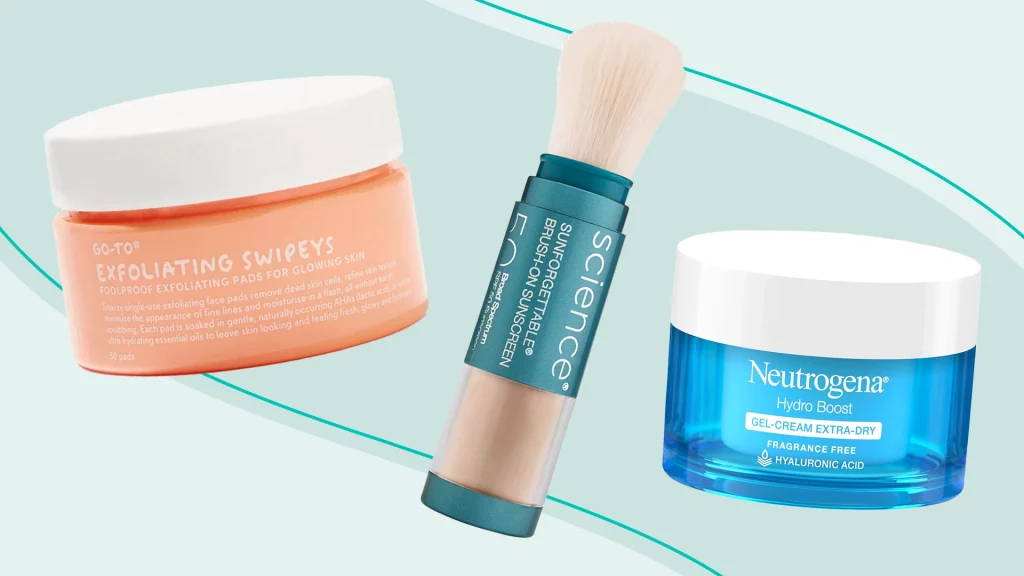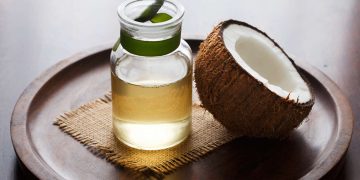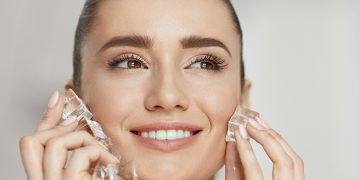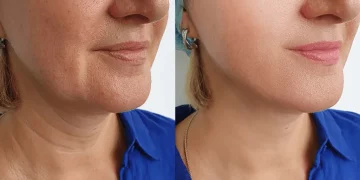Introduction: Why Exfoliation is Crucial for Skin Health
Exfoliation is a fundamental step in any skincare routine, and it plays a crucial role in maintaining the health and appearance of your skin. It involves removing dead skin cells from the surface, helping to reveal fresh, radiant skin underneath. This process not only enhances the texture and tone of your skin but also helps with a range of skin concerns, such as acne, dry patches, and dullness.
Our skin naturally sheds dead cells every 28 to 30 days, but sometimes this process slows down, leading to the accumulation of dead skin cells on the surface. This buildup can result in clogged pores, rough patches, and a lackluster complexion. Regular exfoliation speeds up the skin’s natural renewal process and ensures that the skin’s surface remains smooth, bright, and clear.
While exfoliating is essential for healthy skin, it’s crucial to find the right balance. Over-exfoliating or using harsh exfoliants can lead to irritation, sensitivity, and even long-term damage. Therefore, understanding the right methods and frequency of exfoliation is key to achieving glowing skin without irritation. In this article, we’ll explore the importance of exfoliation, the different methods available, how often you should exfoliate based on your skin type, and how to exfoliate gently to avoid causing harm to your skin.
Exfoliation Methods: Chemical vs. Physical Exfoliants
When it comes to exfoliation, there are two main methods: chemical exfoliation and physical exfoliation. Both methods have their own benefits and considerations, and choosing the right one for your skin can make all the difference in achieving smooth, healthy skin without irritation.
- Chemical Exfoliants: Chemical exfoliants use active ingredients to dissolve dead skin cells. These exfoliants are typically acids, such as alpha-hydroxy acids (AHAs) or beta-hydroxy acids (BHAs), which work to break down the bonds that hold dead skin cells together, making it easier to remove them. Chemical exfoliants are generally gentler on the skin compared to physical exfoliants because they don’t rely on abrasive particles. They can also penetrate deeper into the skin, targeting issues like clogged pores and acne.
- Alpha-Hydroxy Acids (AHAs): AHAs, such as glycolic acid and lactic acid, are water-soluble and work on the skin’s surface to improve texture, tone, and radiance. AHAs are especially beneficial for dry or sensitive skin types because they also have hydrating properties.
- Beta-Hydroxy Acids (BHAs): BHAs, particularly salicylic acid, are oil-soluble, making them effective at penetrating deeper into the pores to exfoliate and help clear out excess oil and debris. BHAs are especially useful for oily and acne-prone skin, as they can help prevent breakouts by keeping pores clean.
- Physical Exfoliants: Physical exfoliants, also known as manual exfoliants, involve the use of abrasive particles to slough off dead skin cells. These exfoliants typically contain grains, beads, or scrubs that physically scrub the surface of the skin. While these products can offer immediate results in terms of smoothness, they can be harsh on the skin, especially if used too frequently or with excessive pressure. Common physical exfoliants include sugar scrubs, salt scrubs, and facial brushes. While they may be effective at providing a quick polish to the skin, they also have the potential to cause microtears if used incorrectly. Overuse of physical exfoliants can lead to irritation, inflammation, and even damage to the skin’s barrier, making it important to use them sparingly and gently. Unlike chemical exfoliants, physical exfoliants do not penetrate deeply into the skin, but they can be beneficial for removing surface debris and improving the skin’s texture temporarily.
Both exfoliation methods have their advantages, and finding the right one for your skin type and concerns is essential to ensure you’re not causing harm or irritation.

How Often to Exfoliate: Recommendations Based on Skin Type
The frequency of exfoliation can vary based on your skin type, concerns, and the exfoliation method used. While exfoliating is an important step in skincare, overdoing it can lead to over-exfoliation, which can result in redness, irritation, dryness, and an impaired skin barrier. So, it’s important to listen to your skin and adjust the frequency of exfoliation accordingly.
- Sensitive Skin: If you have sensitive skin, it’s essential to exfoliate gently and less frequently to avoid irritation. Over-exfoliating can lead to redness, stinging, or burning sensations. For sensitive skin, opt for mild chemical exfoliants, such as lactic acid, or use physical exfoliants with very fine, smooth particles. Start with exfoliating once a week, and gradually increase to twice a week if your skin tolerates it. Avoid harsh physical exfoliants or scrubs with large, abrasive particles, as they can cause more harm than good.
- Dry Skin: Dry skin can benefit from regular exfoliation to remove dead skin cells that contribute to a dull, flaky complexion. However, over-exfoliating can exacerbate dryness and irritation. For dry skin, it’s best to stick to gentle chemical exfoliants with AHAs, as they can help exfoliate while also providing hydration. Exfoliating 1-2 times a week is usually enough to maintain smooth, radiant skin. It’s also important to follow up with a nourishing moisturizer to replenish lost moisture after exfoliating.
- Oily Skin: Oily skin can often tolerate more frequent exfoliation since it tends to produce more oil and is prone to clogged pores and breakouts. BHAs, like salicylic acid, are particularly effective for oily and acne-prone skin because they can penetrate deep into the pores and help keep them clean. Exfoliating 2-3 times a week can help keep excess oil in check, minimize clogged pores, and prevent breakouts. However, over-exfoliating can lead to dryness or irritation, so it’s important to balance exfoliation with proper hydration.
- Normal Skin: If you have normal skin, you can likely tolerate exfoliating 2-3 times a week without much risk of irritation. Both chemical and physical exfoliants can be used, but it’s important to choose products that are appropriate for your skin’s needs. A mild exfoliant will maintain smoothness without stripping the skin of essential oils.
- Combination Skin: For combination skin, exfoliating 2-3 times a week is usually sufficient. Focus on exfoliating the T-zone, which tends to be oilier, more often, while treating drier areas with gentler exfoliants. You can use a combination of chemical exfoliants for the oilier parts of your face and physical exfoliants for the dry areas. Be sure to adjust your exfoliation routine based on how your skin responds.
Avoiding Irritation: How to Exfoliate Gently
While exfoliation offers numerous benefits, it’s essential to do it properly to avoid irritation or damage to your skin. Here are a few tips for exfoliating gently and safely:
- Start Slow: If you’re new to exfoliating or trying a new exfoliant, start slow. Begin with once a week and increase frequency gradually based on your skin’s tolerance. This allows your skin to build up resilience without overwhelming it.
- Use the Right Product: Choose exfoliants that are formulated for your skin type. For sensitive or dry skin, opt for mild, hydrating exfoliants like lactic acid or mild scrubs with fine particles. For oily or acne-prone skin, consider stronger exfoliants like salicylic acid, but avoid harsh physical exfoliants.
- Apply Gently: Whether you’re using a chemical or physical exfoliant, always apply it gently. Avoid scrubbing aggressively, as this can cause irritation and damage the skin. Use soft, circular motions when applying physical exfoliants, and allow chemical exfoliants to sit on your skin for the recommended amount of time.
- Moisturize After Exfoliating: Exfoliation can strip the skin of moisture, so it’s important to follow up with a nourishing moisturizer after exfoliating. This helps replenish the skin’s hydration and repair any damage caused by exfoliation.
- Protect Your Skin: Exfoliation can make your skin more sensitive to the sun. Always apply a broad-spectrum sunscreen during the day to protect your skin from UV damage, which can cause further irritation or pigmentation issues.
Conclusion: Find the Perfect Balance for Healthy Skin
Exfoliation is an essential step in maintaining healthy, glowing skin, but it’s crucial to find the right balance to avoid irritation. The frequency of exfoliation depends on your skin type and concerns. While it’s important to exfoliate regularly to remove dead skin cells and promote skin renewal, over-exfoliating can damage your skin’s natural barrier and cause irritation.
By choosing the right exfoliation method and frequency for your skin, you can enjoy all the benefits of exfoliation—smooth, bright, and healthy-looking skin—without the risk of irritation. Remember to be gentle, start slow, and always moisturize and protect your skin after exfoliating to maintain a healthy, glowing complexion.












































